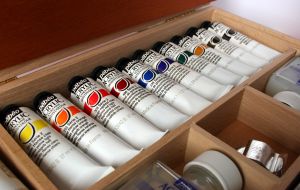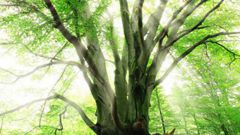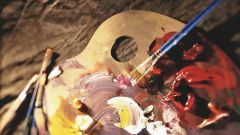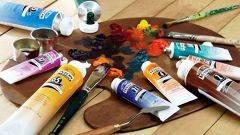You will need
- Oil paint, primer, glue, fixative, palette, brushes (preferably flat and made from natural materials), palette knife, easel, pencil, eraser, tracing paper , carbon paper and other useful things purchased by artists for ease of operation.
Instruction
1
Buy canvas. Usually they come in linen or cotton. Cotton canvas is cheaper and easier to handle. Linseed is fine-grained, suitable for creating fine detail, and coarse, which well reflect the texture (e.g., rocks, sea). Instead of the traditional canvas for oil used burlap, plywood, hardboard, metal. You can use paper, but the picture will not be different strength.
Cheaper canvas – one that stretched on cardboard. It is thin and easy to carry, with a maximum size of 0,5x0,7m. Canvas on stretcher more expensive and heavy, but larger – up to 1,2x1,5m.
Cheaper canvas – one that stretched on cardboard. It is thin and easy to carry, with a maximum size of 0,5x0,7m. Canvas on stretcher more expensive and heavy, but larger – up to 1,2x1,5m.
2
Together with the canvas purchase all the necessary supplies: oil paints, primer, glue, fixative, palette, brushes, palette knife, easel. If you do a sketch on paper, and then translate it onto the canvas, you need a transparent paper is tracing paper and carbon paper. In the process, can be useful something else, so consult with the seller.
3
Glue and cover the ground canvas, and then let it dry. This operation is done to ensure that paint did not destroy it well and lay down on the canvas.
4
Make a sketch with a pencil. If writing technique is multi-layered, the picture you want to pin special tool, or cover with another layer of soil.
5
Further everything will depend on the technique. If the picture is small, and the experience of creating the paintings is still small, try the technique in a single session (alla prima). This means that the picture should finish in one or a few approaches, but time before the paint dries. The time of drying of oil paint on average about 3 days, depending on the thickness of the layer. On the picture you'll get the tones and colors you create by mixing. Additional color will turn from shining through soil. The painting itself will be more easy and light.
6
Usually artists use a layered technique: it reveals all the possibilities of oil painting. The gist of it is that the author divides his task into several subtasks, which are then implemented in different layers. First, you create the first thin layer called "underpainting". To run paint diluted. Underpainting helps to determine the composition, tonality, form, shadows and chiaroscuro.
7
In subsequent layers the artist gives step by step details of form and color, texture. In the last layers added linseed oil to give richness and color stability. After the paint is dry it is varnished. The duration of this period depends on the thickness of the layers, and the average is 6-12 months.
Note
Learn about the laws of composition and colour mixing before you take up oil.
Spend time with watercolor and gouache to get the hang of. According to the technique of oil closer to gouache – paintings become dense and opaque.
An easier way to learn the art of drawing – courses in a group or individually by a skilled master.
Spend time with watercolor and gouache to get the hang of. According to the technique of oil closer to gouache – paintings become dense and opaque.
An easier way to learn the art of drawing – courses in a group or individually by a skilled master.
Useful advice
To have the trial in the oil painting do not buy expensive materials. Work in this technique requires the necessary training, skills and patience. Go from simple to complex.
Drawing pencil on the ground should be applied gently to the ground not cracked. You can insure by applying another layer of primer.
When using a layered technique remember that each layer thickness should be equal to the previous one or be more of it. Otherwise oil will crack.
Before proceeding to the next layer, wait until dry previous.
If you do not like the result, remove carefully the layer until it has dried, either apply another layer on top.
Drawing pencil on the ground should be applied gently to the ground not cracked. You can insure by applying another layer of primer.
When using a layered technique remember that each layer thickness should be equal to the previous one or be more of it. Otherwise oil will crack.
Before proceeding to the next layer, wait until dry previous.
If you do not like the result, remove carefully the layer until it has dried, either apply another layer on top.



